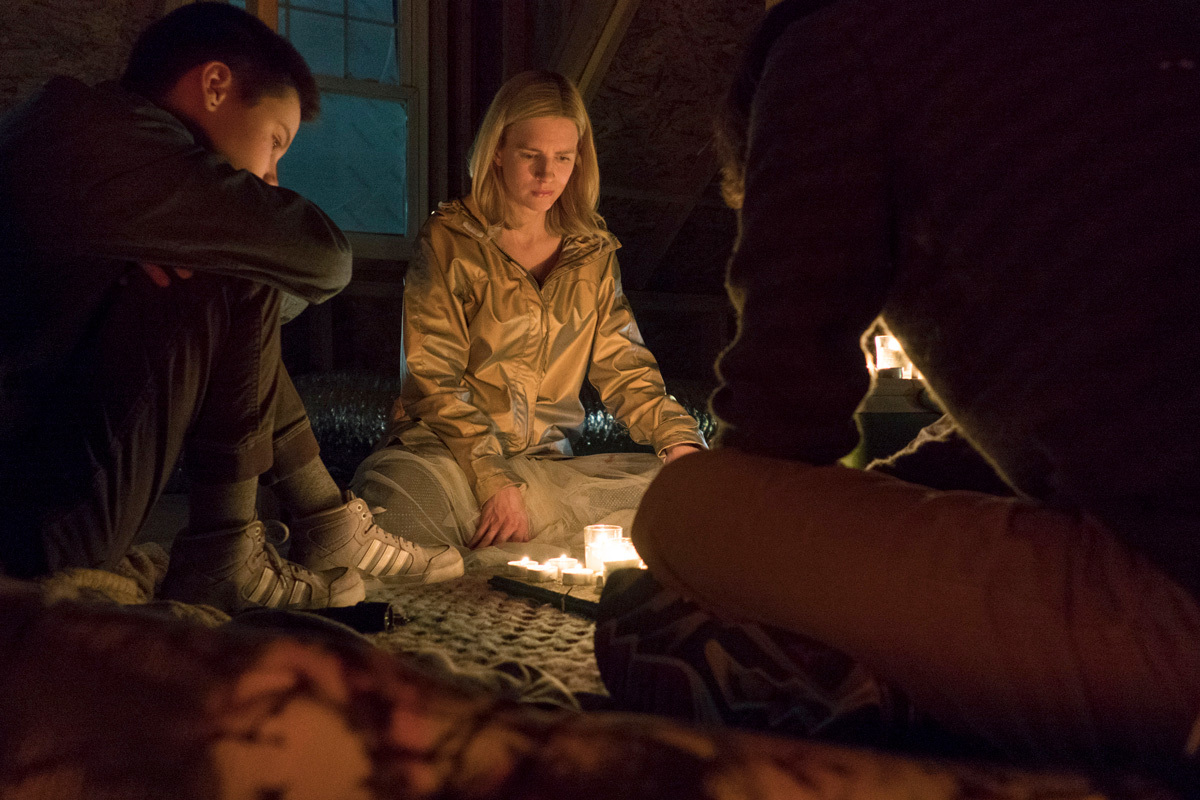The OA is the kind of show that is difficult to talk about without spoiling everything. A show where to reveal even what the O and A of The OA stand for means major revelation. A show whose arrival, in full, on Netflix today is a surprise akin to a Beyoncé album drop.
The eight-part series is the brainchild of actress Brit Marling and co-director Zal Batmanglij, and it launches as it means to go on: by upending expectations. The OA begins with a mystery which only deepens. Prairie — played by Marling — is a young blind woman who disappeared from her suburban home many years ago. She returns but refuses to tell her family, the media, or the FBI, where she’s been and why. Or how she’s suddenly got her sight back.
Instead, in the lo-fi, grey suburbia Prairie’s returned to, she recruits four teenage boys and their schoolteacher for a mission that will only make sense once she’s told them her story. By candlelight, in an abandoned house she begins to tell them her fantastical tale. And it’s here that The OA strikes out boldly, touching on themes of captivity, near-death experiences, time travel, the American Dream, and the myth of masculinity. It’s big, brave storytelling; Marling and Batmanglij tear up the rulebook so completely that even the series’s credits are a thrill.
Marling and Batmanglij are familiar with mind-bending territory. Batmanglij directed Marling in their Sundance breakout Sound of My Voice, a low-budget puzzler which hovered between genres from the spiritual to sci-fi. That feature film background helps explains the rule-breaking, shape-shifting nature of The OA. Marling and Batmanglij saw the thriller as an eight-hour feature film rather than a TV show and spent three years developing the idea.
“It was really important to us that if we were going to make an eight-hour feature that we had spent years creating a rich, solid world and mythology, and that that mythology meant something,” Marling explains. “We spent three years in writing, because we had to know everything about how it would turn out.”
The feeling that at least someone knows where The OA is going is reassuring for anyone who’s felt short changed by the make-it-up-as-we-go-along school of previous high-wire shows like Lost. The OA can be a dizzying watch as the plot takes hairpin turns, so it helps to know the riddles are solvable. “We spent a good few years coming up with the story. It wasn’t just about the first scene,” Marling continues. “We plotted years in advance, we had to work out what the end would be like from the very beginning.”
The show also has to walk another tightrope: switching between the hyperreal world Prairie sets her story in, and the lo-fi realism of suburban America to which she’s returned. For research, Marling and Batmanglij traveled to schools in the Midwest to capture a sense of the contemporary high school experience. What they found informs the second tier of storytelling in The OA, the experiences of the four boys and their schoolteacher who listen to Prairie’s tale.

It’s not accidental that it is a group of boys, including one transgendered teen, that is drawn to Prairie’s story. “One of the differences from my own high school experience that was pretty profound was a sense of quiet desperation among all of them, but certainly among young men,” Marling says of her time spent with teenagers. “There’s a sense there’s been an expansion of the definition of what it means to be a woman, but there hasn’t been an accompanying movement in the understanding of what space these young men are occupying. It feels they are floundering in terms of what it means to be a man, which, if anything, has become more narrow.”
Narrow is not a term you could ascribe The OA though, which unfolds in the manner of a page turner, suddenly firing off in unexpected directions. It will undoubtedly be cast as a kind of adult Stranger Things but it bears more of a comparison to a book, Hanya Yanagihara’s much dissected 2015 novel, A Little Life, which performs a similar trick of fantastical story (sometimes exasperatingly so) as metaphor for real life. That hyper-real quality, which may prove divisive, is also The OA’s strength, in the end. It is a show which strives to find other ways of living in the harsh realities of the real world as much as tell stories of a fantasy one. It’s a world that The OA’s creators feel is necessary. “I very much need to see the world that way to survive,” Marling says, “In order to survive the brutality of being alive. I have to invest the mundane with the magic.” At the end of a long, hard 2016, The OA might just do the trick.
The OA is streaming on Netflix now.
Credits
Text Colin Crummy
